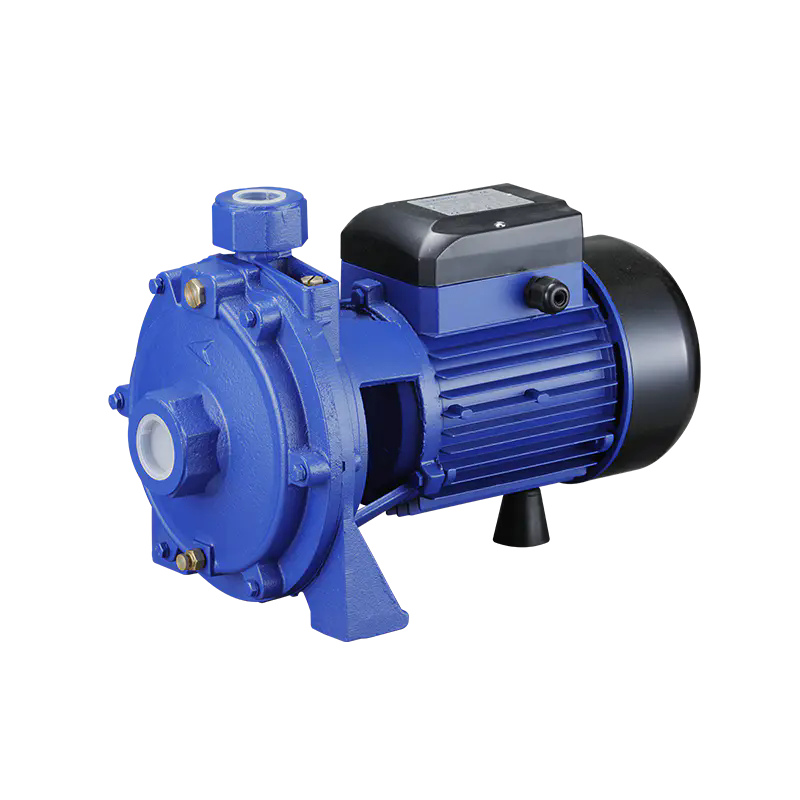The Essential Guide to Centrifugal Water Pumps: Understanding Their Functionality and Applications
2025-09-11

At the heart of a centrifugal water pump is the impeller, a rotating component that imparts kinetic energy to the fluid. When the impeller spins, it creates a centrifugal force that pushes the water outward from the center of the pump. As the fluid is expelled, a vacuum is created, allowing more water to enter the pump from the source. This continuous cycle of energy transfer and fluid movement enables the pump to maintain a consistent flow rate.
One of the primary advantages of centrifugal water pumps is their ability to handle large volumes of fluid at relatively low pressures. This characteristic makes them ideal for applications where high flow rates are essential, such as in municipal water supply systems or industrial processes requiring significant amounts of water. Additionally, centrifugal pumps are versatile and can be used with various types of fluids, including clean water, chemicals, and even slurries, depending on the materials used in their construction.
When selecting a centrifugal water pump, there are several factors to consider. Flow rate and head (the height to which the pump can raise water) are critical specifications that determine the pump's suitability for a specific application. Users should also evaluate the pump's efficiency, maintenance requirements, and the type of impeller used, as these aspects can impact operational costs and longevity.
Maintenance is essential for ensuring the optimal performance of centrifugal water pumps. Regular inspections, monitoring for wear and tear, and timely replacement of components such as seals and bearings can prevent unexpected failures. Additionally, operators should be aware of the pump's operating conditions; running a pump outside its designed parameters may lead to decreased efficiency or damage over time.
In conclusion, centrifugal water pumps are an indispensable part of many industrial processes, known for their efficiency and adaptability. By understanding their operation, benefits, and maintenance needs, businesses can ensure they select the right pump for their applications and maintain it effectively for long-term reliability. Investing time in learning about these pumps can greatly enhance operational performance and resource management in water-related processes.
Other blog
Understanding Peripheral Water Pumps: Essential Insights for Industrial Applications
Peripheral water pumps are specialized devices commonly used in various industrial applications for the efficient transfer and circulation of water and other fluids. Known for their compact design and high efficiency, these pumps operate on a unique principle that distinguishes them from other types of centrifugal pumps. Understanding the operational mechanics and benefits of peripheral water pump
Top 5 Advantages of Using a Peripheral Water Pump in Industrial Applications
Top 5 Advantages of Using a Peripheral Water Pump in Industrial Applications In the realm of industrial operations, the efficiency of water pumps plays a crucial role in ensuring smooth workflows and reliable performance. Among various types of pumps, **peripheral water pumps** stand out due to their unique design and operational advantages. In this comprehensive exploration, we will delve into th
Understanding Peripheral Water Pumps: Efficiency and Applications in Industrial Settings
Peripheral water pumps are essential components in a variety of industrial systems, playing a critical role in fluid management across multiple applications. These pumps are characterized by their unique design, which utilizes a peripheral impeller to generate pressure. This mechanism allows them to efficiently move water and other fluids while maintaining a smaller footprint compared to other pum
Quick Links
Product

Social Media
Parent Company:TAIZHOU WERTO IMPORT AND EXPORT CO.,LTD Head Office:
ROOM06,5FLOOR,UNIT2,#3TIMES BUILDING.NO.115 JIULONG AVENUE WENLING ZHEJIANG CHINA
Factory:TAIZHOU WERTO MECHANICAL AND ELECTRICAL CO.,LTD
Address:No.20 Building,Zeguo Industrial Zone,Wenling,Zhejiang,China
COOKIES
Our website uses cookies and similar technologies to personalize the advertising shown to you and to help you get the best experience on our website. For more information, see our Privacy & Cookie Policy
COOKIES
Our website uses cookies and similar technologies to personalize the advertising shown to you and to help you get the best experience on our website. For more information, see our Privacy & Cookie Policy
These cookies are necessary for basic functions such as payment. Standard cookies cannot be turned off and do not store any of your information.
These cookies collect information, such as how many people are using our site or which pages are popular, to help us improve the customer experience. Turning these cookies off will mean we can't collect information to improve your experience.
These cookies enable the website to provide enhanced functionality and personalization. They may be set by us or by third-party providers whose services we have added to our pages. If you do not allow these cookies, some or all of these services may not function properly.
These cookies help us understand what you are interested in so that we can show you relevant advertising on other websites. Turning these cookies off will mean we are unable to show you any personalized advertising.





